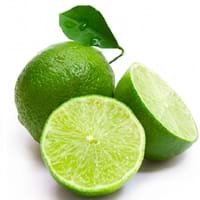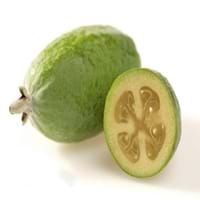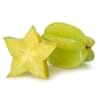Health Benefits
Arthritis treatment, Cholera treatment, Gout treatment, Heart care, Piles treatment, Scurvy treatment
Anti depressant, Cancer prevention, Reduces nervous tension, Treatment of alzheimer's disease, Treatment of Lung disease
General Benefits
Cures fever, Digestive aid, Eye care, Maintains healthy cholesterol level, Treatment of common cold
Digestive aid, Helps in weight loss, Improves blood circulation, Strengthens bones, Treatment of common cold
Skin Benefits
Anti-aging benefits, Skin rejuvenation, Treatment of acne, Treatment of dark spots
Brightens and lightens complexion, Skin rejuvenation
Hair Benefits
Promotes longer and healthier hair, Treatment of dandruff
Promotes longer and healthier hair, Protects hair
Allergy Symptoms
Breathing difficulty, Coughing, Eye irritation, Hives, Inflammation, Nasal congestion, Runny nose, Skin rash, Wheezing
NA
Side Effects
Chances of sunburn
Allergic reaction
Best Time to Eat
Along with meal, Best to drink warm water with lime on an empty stomach, Don't consume at night and before bed
As a snack in the late afternoon, Don't consume at night and before bed, Eat the fresh ones, avoid mixing with any other foods, don't eat after meal., Morning time (before lunch)
Vitamin A (Retinol)
Not Available
Vitamin B5 (Pantothenic Acid)
Vitamin C (Ascorbic Acid)
Vitamin K (Phyllochinone)
Calories in Fresh Fruit with Peel
Not Available
Not Available
Calories in Fresh Fruit without Peel
Calories in Frozen Form
Not Available
Not Available
Calories in Dried Form
Not Available
Calories in Canned Form
Not Available
Type
Citrus, Tree fruit
Tree fruit
Season
All seasons
Autumn, Winter
Varieties
Key lime, Persian lime, Kaffir lime, Desert lime, Palestine Sweet Lime, Mexican Sweet Lime, Mary Ellen Sweet Lime
Anatoki, Gemini, Kaiteri, Kakariki, Pounamu, Unique, Apollo, Den's Choice, Kakapo, Mammoth, Opal Star, Triumph and Wiki Tu
Inside Color
Light Green
White
Texture
Succulent
Succulent
Origin
India
Argentina, Brazil, Paraguay, Uruguay
Grows on
Trees
Not Available
Soil Type
Clay loam, Sandy loam
Clay loam, Gravely loam, Sandy
Climatic Conditions
Sunny, Warm to hot climate
Cold, Warm
Facts about
- Lime is the called as the powerhouse of flavors.
- Fresh lime juice is so acidic that it can dissolve concrete.
- Limes are more fragrant and acidic than lemons.
- Persian limes are almost seedless and thorn less.
- Feijoa is called as "pineapple guava" in some countries.
- Feijoa tree is an ornamental plant that can also be used as hedge & windbreak.
- All parts of feijoa fruit are edible(skin is mostly discarded).
Top Producer
China
New Zealand
Other Countries
Argentina, Brazil, India, Mexico
Australia, Azerbaijan, India, Japan, United States of America
Top Importer
United States of America
China
Top Exporter
Mexico
New Zealand
Botanical Name
Citrus aurantifolia
Acca sellowiana
Synonym
not available
Feijoa sellowiana or Orthostemon sellowianus
Subkingdom
Tracheobionta
Tracheobionta
Division
Magnoliophyta
Magnoliophyta
Class
Magnoliopsida
Magnoliopsida
Order
Sapindales
Myrtales
Family
Rutaceae
Myrtaceae
Species
C. aurantifolia
A. sellowiana
Generic Group
Citrus fruit
Myrtle
Difference Between Lime and Feijoa
We might think that Lime and Feijoa are similar with respect to nutritional value and health benefits. But the nutrient content of both fruits is different. Lime and Feijoa Facts such as their taste, shape, color, and size are also distinct. The difference between Lime and Feijoa is explained here.
The amount of calories in 100 gm of fresh Lime and Feijoa with peel is Not Available and Not Available and the amount of calories without peel is 30.00 kcal and 55.00 kcal respectively. Thus, Lime and Feijoa belong to Low Calorie Fruits and Low Calorie Fruits category.These fruits might or might not differ with respect to their scientific classification. The order of Lime and Feijoa is Sapindales and Myrtales respectively. Lime belongs to Rutaceae family and Feijoa belongs to Myrtaceae family. Lime belongs to Citrus genus of C. aurantifolia species and Feijoa belongs to Acca genus of A. sellowiana species. Beings plants, both fruits belong to Plantae Kingdom.









